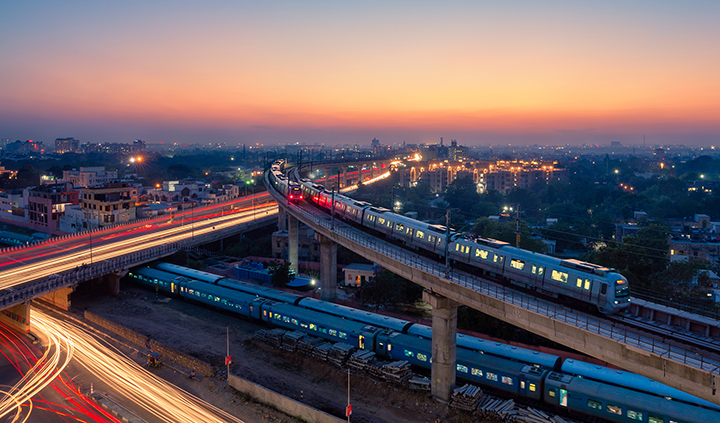10 Major Trends of the Urban Rail Transit Industry's Digital Transformation
This site uses cookies. By continuing to browse the site you are agreeing to our use of cookies.
Read our privacy policy>
![]()
Enterprise products, solutions & services

At the China International Urban Rail Transit Development Trend Forum on November 6, 2020, experts from the Community of Metros (COMET) outlined the ten urban rail transit digital transformation trends.
Using the passenger train synchronization technology to monitor the status of tracks, tunnels, and power supply systems in real time:
In some countries, metro operators have started to use passenger trains to collect device information along tracks and send it back to maintenance centers. This improves the frequency of equipment inspection and reduces the maintenance and repair costs at nighttime.
3D image-based station management system:
Metro operators around the world are beginning to centrally manage devices at stations. In this way, devices at stations can be started remotely, and metro staff can choose specific cameras to monitor onsite situations.
Providing real-time information on passenger flow and crowdedness:
Metros can now provide passengers with more real-time information, including the crowdedness of a certain section of track. Metro operators are now trying to provide even more specific information, such as details about the crowdedness and internal temperature of individual carriages.
Intelligent recognition technology:
The use of intelligent recognition technology at metro stations has become increasingly common. As well as its application in the ticketing system, metro operators are also beginning to deploy intelligent recognition to improve security and maintenance.
Using Virtual Reality (VR) for metro staff training and safety education:
VR technology, widely used in online gaming, has now been extended to metro staff training. For example, VR can be used to train metro drivers and station attendants on how to handle emergencies. The main advantage of VR lies in its lifelike simulation and immersive experience.
Using vehicle image detection technology for train overhaul:
In terms of train maintenance at stations, Chinese metro companies have installed fixed image detectors in repair centers and used robots to quickly scan train components before more careful manual repair.
Multiple applications of image detection technology:
With the development of imaging technology, many countries have begun deploying cameras at metro stations. Cameras at platforms can be used to estimate the waiting time of passengers, and detect whether there are any passengers falling from escalators, or identify improper behavior by the train driver. Cameras can also be used to detect unattended luggage and illegal entry of people into the track area. Cameras can be applied in a wide range of scenarios as well as security protection.
Artificial Intelligence (AI) apps and mobile apps:
AI has been gradually put into use in metros. Robots that can provide services such as online consulting, guidance at stations, and cleaning device inspection have been deployed. In Europe and North America, mobile voice guidance systems provide comprehensive and tailored services to meet special passenger requirements.
Long-distance ticket induction entry:
For some passengers with special requirements, long-distance ticket induction can be used for entry and exit, improving convenience for passengers in wheelchairs and for those carrying heavy baggage.
Equipping all staff at stations with tablet computers (information integration system):
With labor costs increasing, many European and American subways have taken various measures to reduce the manpower at stations. Because each station attendant plays several roles, they must be equipped with tablets to quickly respond to passenger requirements, report device repair status, and make contact in case of emergencies.